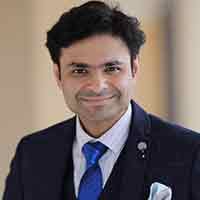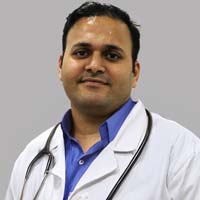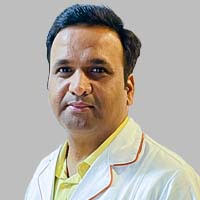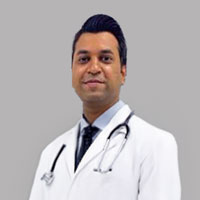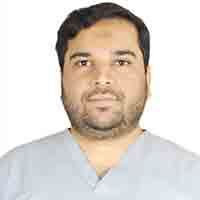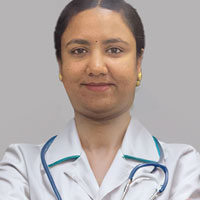Why is Knee Arthroscopy Required?
It is recommended to carry out a knee arthroscopy in the patients experiencing knee pain. The surgeon may sometimes identify the reasons behind the knee pain or they may want to confirm it with the help of knee arthroscopy.
Arthroscopy is helpful in detecting as well as repairing the joint ligaments and also in the treatment of various other conditions linked with knee problems. These conditions are listed below.
- Torn surface or articular cartilage
- Removal of cysts
- Torn floating cartilage or meniscus
- Patello-femoral (knee-cap) disorders
- Washout of infected knees
- Anterior Cruciate ligament reconstruction
Recovery time and prognosis (likely outcome of medical condition) is based on the nature of knee problem and type of treatment used.
Pre-operative Preparation
It is advised not to take Aspirin and other anti-inflammatory drugs 5 days before knee arthroscopy. In case pain medications are required, consulting your doctor for the same is recommended. Routine medications if any are allowed to consume with the advise of the surgeon prior to few days of knee arthroscopy. Smoking needs to be stopped before some days of knee arthroscopy.
Day Before Surgery
A day before surgery, patients need to follow instructions given by their surgeon. Record of medical reports and diagnostic tests need to be kept handy so that there will not be any further complications.
Procedure Day
On the day of knee arthroscopy, patient gets admitted to the hospital based on the advise of the surgeon. This may vary from the hospital to hospital. Fasting is required for 6 hours before surgery. There will be a marking done on the limb undergoing surgery for identification purpose. After giving anesthesia, the knee area needs to be sterilized. For making the process “blood-free,†a tourniquet is applied on the thigh of the patient. A tourniquet is a type of bandage used for controlling venous and arterial circulation for prolong period of time. Prior to surgery, an anesthetic is given to the patients. This can be:
- General anesthesia: For complete sleep or unconsciousness.
- Local anesthesia: For making knees numb
- Regional anesthesia: For making the waist area numb
In case of local anesthesia, patients can watch the surgical procedure on the screen of a computer if they want to.
Pristyn Care’s Free Post-Operative Care

Diet & Lifestyle Consultation

Post-Surgery Free Follow-Up

Free Cab Facility

24*7 Patient Support
Methods/Techniques of Knee Arthroscopy
The process of knee arthroscopy usually takes at least 30 minutes for completion. It mostly depends on amount of surgical work required to be carried out by the surgeon inside the knee joint of the patient.
Small incisions will be made by the surgeon at the start of knee arthroscopy. After this, saline or sterile salt water is pumped inside for expanding the knees. An arthroscope enters inside one of the incisions made and surgeon can see inside with the help of camera attached. After identification of problem inside the knees, insertion of small instruments is carried out by the surgeon for correcting the trouble.
After completion of surgical process, surgeon carries out drainage of saline from the joints of the patient. Once this is done, stitching of cuts is carried out.
Post Procedure
Once the surgical process is completed, patients are taken to the recovery room. The operated knee is covered with a bandage. Bandage around the wound can be removed in 24 hours and waterproof dressings can be used to cover the wounds. Swelling is normal to observe post knee arthroscopy. Use of ice packs for 20 minutes, three to four times a day is recommended to reduce the swelling.
Post recovery, patients can return to their normal routine with the advice of surgeon. Post surgery, follow up appointments are required to be taken for monitoring the health of knees.
Post - Operative Exercises and Physiotherapy
After completion of knee arthroscopy, exercise and physiotherapy treatments are advised to the patients. Thigh muscle strengthening is very important in these cases. Muscle build up can be achieved by swimming and cycling. These activities need to be done only after consulting with the surgeon.
Pain Management
Post surgical process, medications are given to the patients for short-term pain. These include, Opioids, non-steroidal anti-inflammatory drugs (NSAIDs) as well as local anesthetics. Combination of these medications can be used by surgeon as per the need. Opioids, though effective, can be addictive. This happens because they are narcotic in nature. This is why, it is recommended to stop using opioids once the pain is relieved.
Dressing Care
Patients get relieved from the hospital with the bandage covering their knees. This bandage needs to be kept clean and dry.
Recovery
It has been reported that recovery time for knee arthroscopy is less than traditional open knee surgeries. It is very essential to follow instructions given by the surgeon post treatment.
Risks And Complications
In general, risks associated with knee arthroscopy are less. In case of knee damage such as partially worn out knee cartilage, chances of improvement are around 65% for short term. No improvement is reported in patients with Osteoarthritis even after arthroscopic surgical treatments. Arthroscopic knee surgery is associated with following risks and complications.
- Infection
- Post operative bleeding
- Stiffness
- Numbness near the incision site
- Injury to nerves and vessels
- Chronic pain syndrome
- Deep vein thrombosis














































































